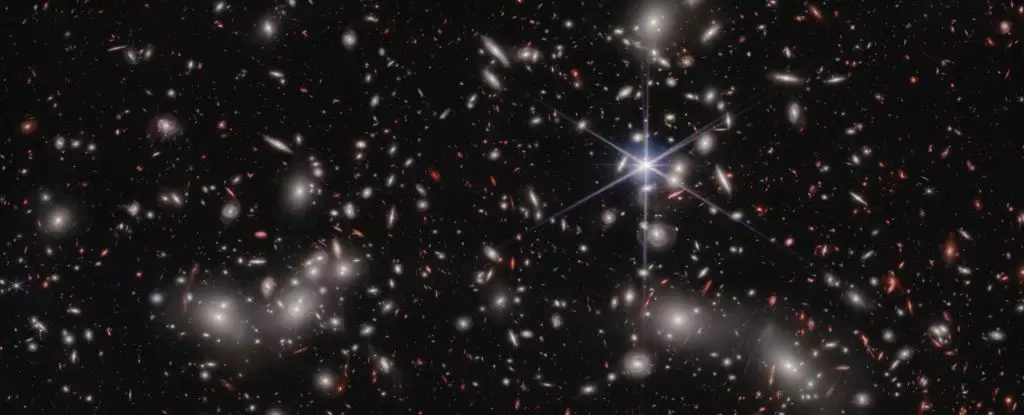The early Universe, a chaotic mosaic of energy and matter, was shrouded in darkness. For a significant period after the Big Bang, space was a dense, fog-like medium dominated by ionized plasma. In this environment, light struggled to exist, with photons scattering against free electrons, rendering vast swathes of the cosmos virtually impenetrable. Understanding how the Universe transitioned from this opaque state into one filled with light is a pivotal area of research in astronomy. Recent studies utilizing cutting-edge technology from the Hubble and James Webb Space Telescopes have led scientists to a surprising revelation: the transformative role of ultra-faint dwarf galaxies in clearing the murk of neutrality and paving the way for cosmic illumination.
In February, a groundbreaking study led by astrophysicist Hakim Atek provided fresh insights into the mechanisms of cosmic reionization. This essential process occurred roughly one billion years after the Big Bang, whereby pockets of neutral hydrogen were ionized, allowing light to permeate the Universe. According to the findings, dwarf galaxies, once thought to play a minor role, are instead the predominant sources of ionizing radiation during this epoch. Iryna Chemerynska, a contributing researcher at the Institut d’Astrophysique de Paris, expressed the significance of this discovery by stating that understanding these low-mass galaxies could reshape our conception of the early Universe’s history.
At the infancy of the Universe, the cosmos was too hot and violent for light to travel freely. Within the first few hundred thousand years post-Big Bang, the Universe began cooling, enabling protons and electrons to combine into neutral hydrogen and helium. The subsequent birth of the first stars initiated a revolution: these stellar bodies generated intense radiation that stripped electrons from hydrogen atoms, transitioning the medium from neutral to ionized. This marked the end of a long dark period, known as the cosmic dawn.
However, discerning the elements responsible for this transformation was fraught with challenges. Previously, astronomers had hypothesized that large, powerful entities, such as massive black holes or sprawling galaxies undergoing robust star formation, were primarily responsible for the reionization of the Universe. Such presuppositions created a narrative where only the largest and most luminous objects could impact cosmic evolution.
The Hubble and JWST data have provided a fresh lens through which to view the early Universe’s structure. A notable finding from Atek’s team involves a galaxy cluster named Abell 2744, which acts as a gravitational lens, magnifying the light from distant dwarf galaxies. This peculiar cosmic effect allowed scientists to analyze these faint galaxies in unprecedented detail. What the researchers uncovered was astonishing: dwarf galaxies not only outnumber their larger counterparts by incredible margins—100 to 1, to be precise—but also produce a staggering four times the ionizing radiation previously attributed to larger galaxies.
While these dwarf galaxies may be diminutive in stature, they appear to be cosmic heavyweights in energy output. Atek highlighted their significance: “These cosmic powerhouses collectively emit more than enough energy to get the job done.” The implications of this are profound, suggesting that a vast population of these low-mass galaxies might have played a fundamental role in reionizing the Universe, transforming its very state.
While the findings are indeed promising, the research team is keenly aware that one observation does not provide the whole picture. Their analysis derived from a single cosmic lens, suggesting the need for broader studies to ensure the findings aren’t confined to an exceptional case of dwarf galaxy clustering. Researchers plan to expand their investigations into other cosmic lens regions, aiming for a more comprehensive understanding of the early galactic landscape.
Astrophysicist Themiya Nanayakkara aptly summarized the excitement enveloping the field, stating: “We have now entered uncharted territory with the JWST.” The implications of this study extend far beyond mere numbers; they challenge long-held assumptions and open a new chapter in our quest to understand the foundations of the cosmos. As we peer deeper into the cosmic dawn, the sources of light illuminating our understanding are not the giants we had anticipated, but rather the myriad of dwarf galaxies quietly shaping the Universe’s narrative.


Leave a Reply